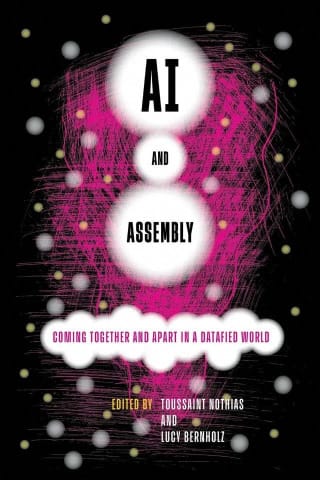AI and Assembly

Ten years ago I co-edited a book called Philanthropy in Democratic Societies. We in the U.S. are no longer living in a functioning democracy. The nation is very much being run like the private family business that its inheriting son bankrupted repeatedly. He and his minions are now bankrupting (financially, morally, politically) the U.S. so the book we need is Philanthropy under Fascism. I guess that's what this blog is going to be about.
I do have a new book coming out tomorrow, July 8. It's called AI and Assembly: Coming Together and Apart in a Datafied World. We didn't make the same mistake this time. The book's contributors are from many parts of the world so it's less U.S. - and democracy-centric. The book's contributors come from many disciplines, so it's relevant to people using many definitions of assembly.
The book explores many of the ways AI is interfering with, re-arranging, re-distributing power in, and necessitating new types of "gatherings." Algorithms shift and shape who you interact with, who you associate with, where and how we assemble, and what distinguishes assembly from other forms of coming together. While it's tempting to think you're in control when you're using digital systems, the truth is their algorithmic infrastructures sift and sort the people and the organizations and the opportunities you see on your screen. You may think you're choosing with whom to associate, but the choices you select from are shaped by the machine. You may think you're having a private event or meeting - but the digital data you generate introduces new understandings of the time and place of all such assemblies. Similarly, the spread of AI has created needs for all kinds of new groups - from c-suite positions to "ethics boards," from standard setters to AI refuseniks to nonprofit guardrail and truth-tellers. AI scraping that severs the web's connections between creators and users will push forth new economic models for the web - no doubt casting and recasting people into new practices and associations. The book explores examples of these implications and others. As a volume, it offers a conceptual map of the many ways AI shapes our groups and our groups shape AI.
U.S. jurisprudence, which has been shipped overseas along with the country's tech products, too often sees all online/digitally-mediated behaviors through the lens of expression. Given the surveillance state the current administration and its tech company colluders are building we're all about to experience just how powerfully digital systems and their voracious data use can be used to manipulate, surveil, reveal, and interfere with our ability to freely assemble. Of course, the adaptation of practice to new technological realities is a throughline in the history of oppressed people, so I also anticipate a boom time in creative uses of tech by activists.
It's weird to have a book come out when I'm too disabled to work and no longer have any institutional affiliations. I hope the book is useful.